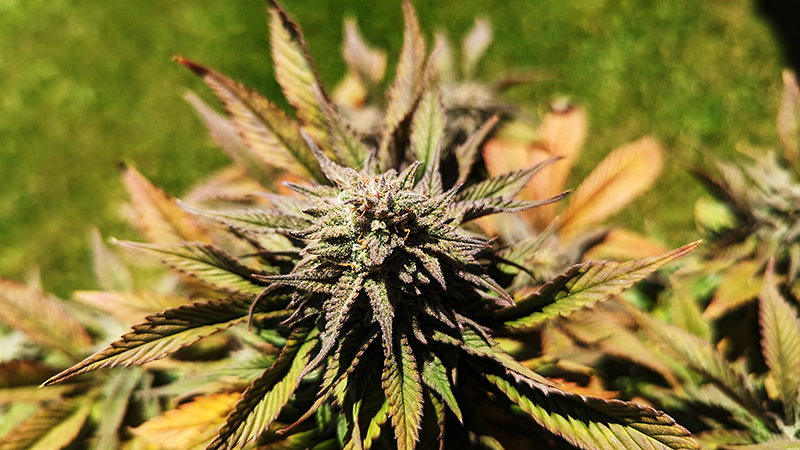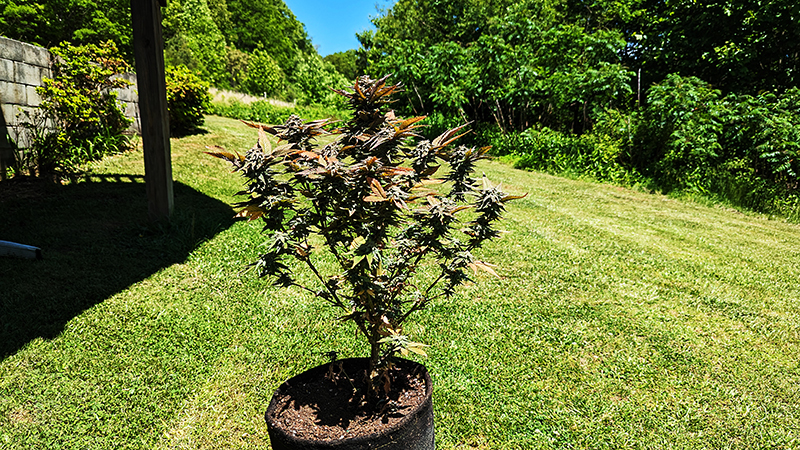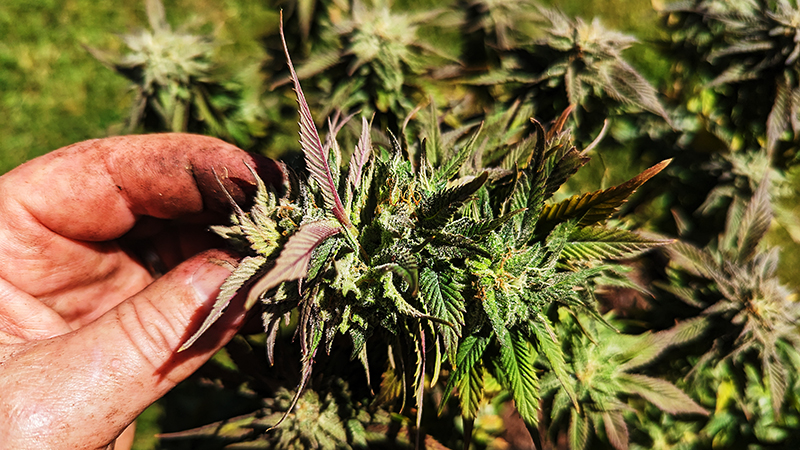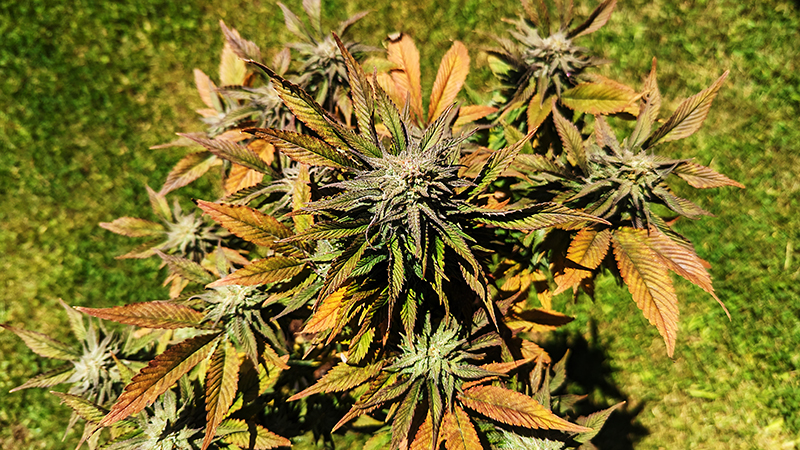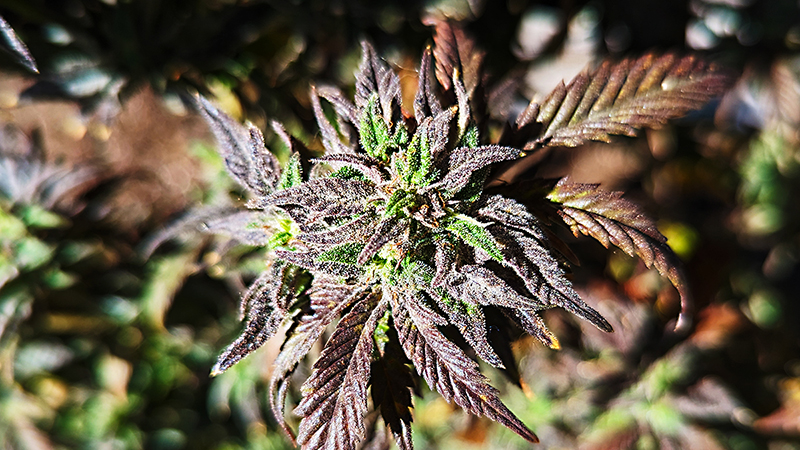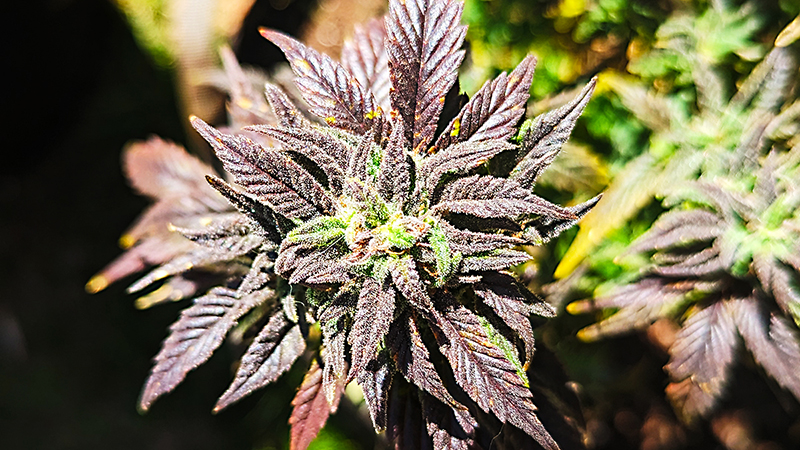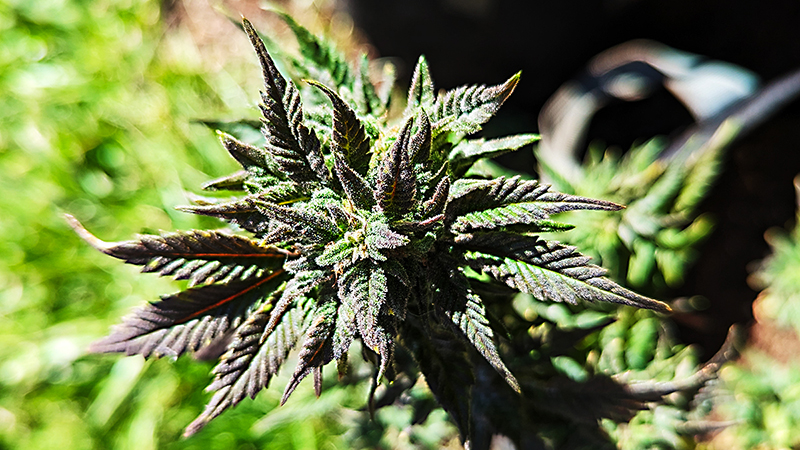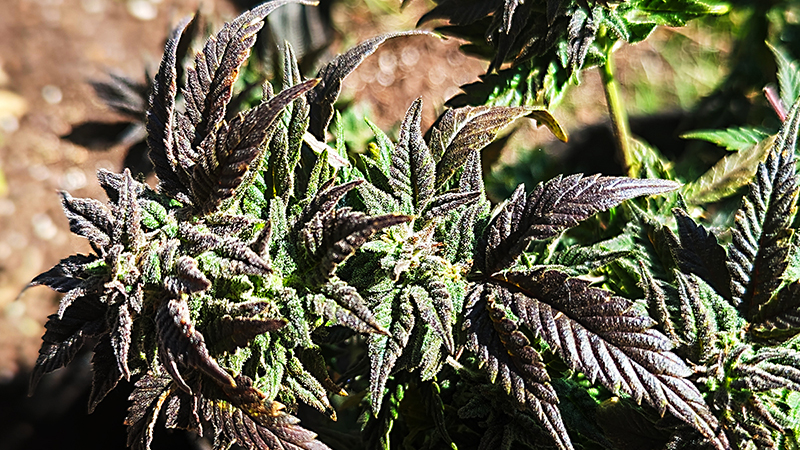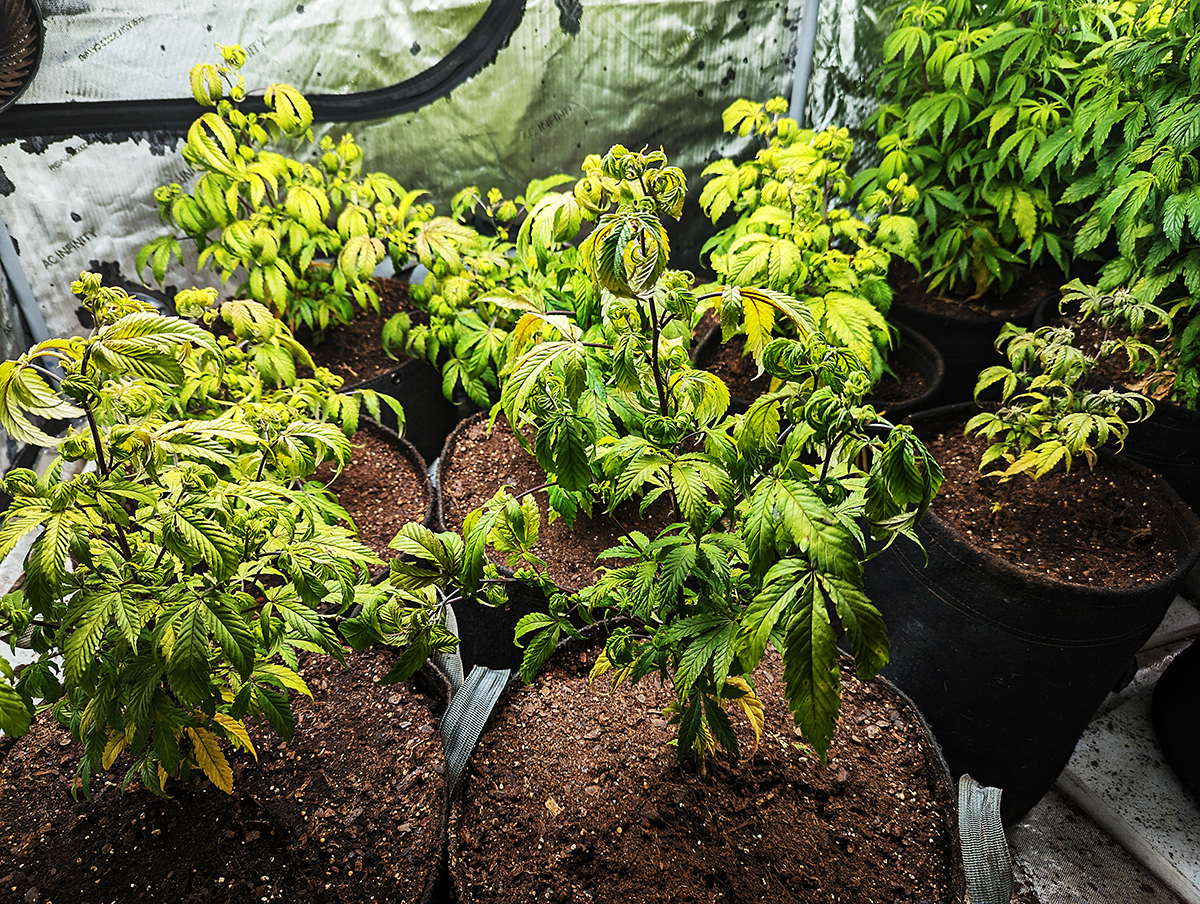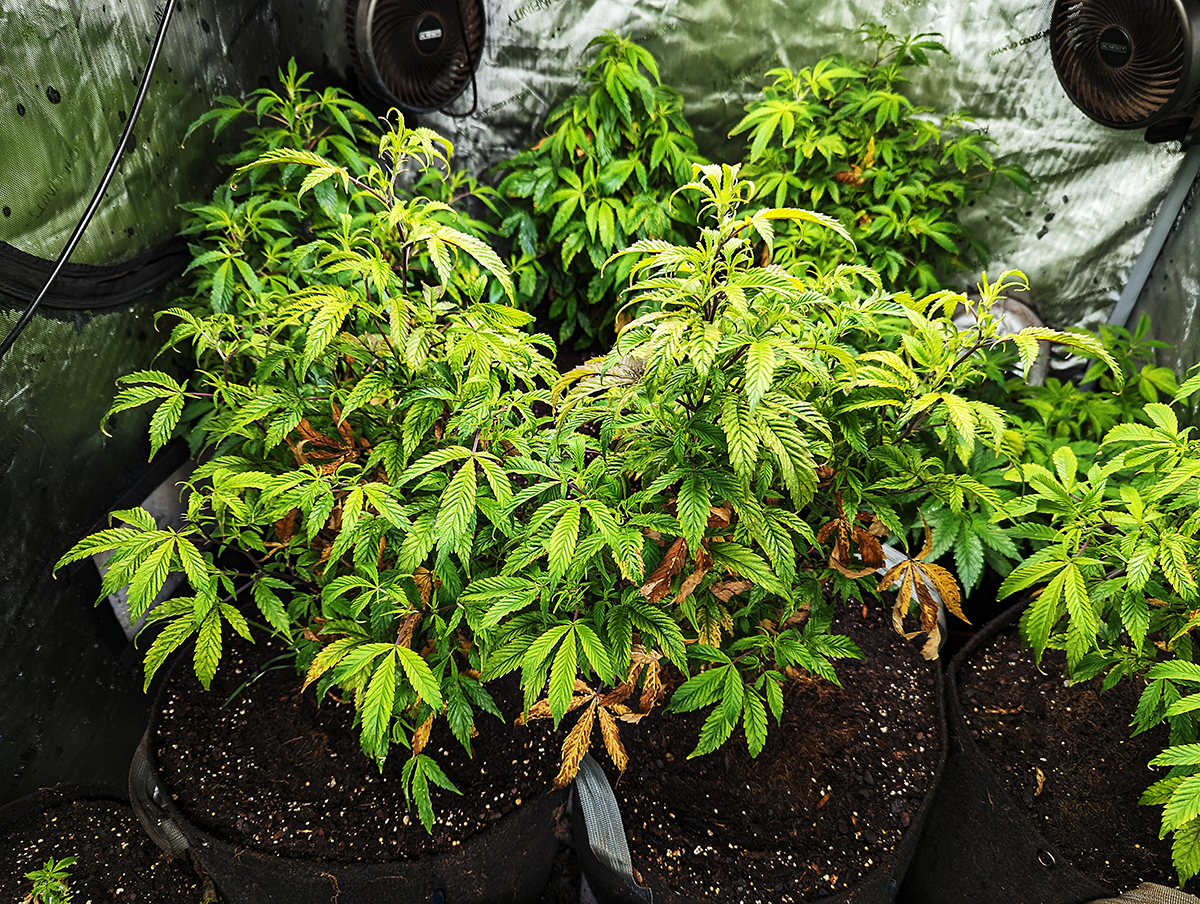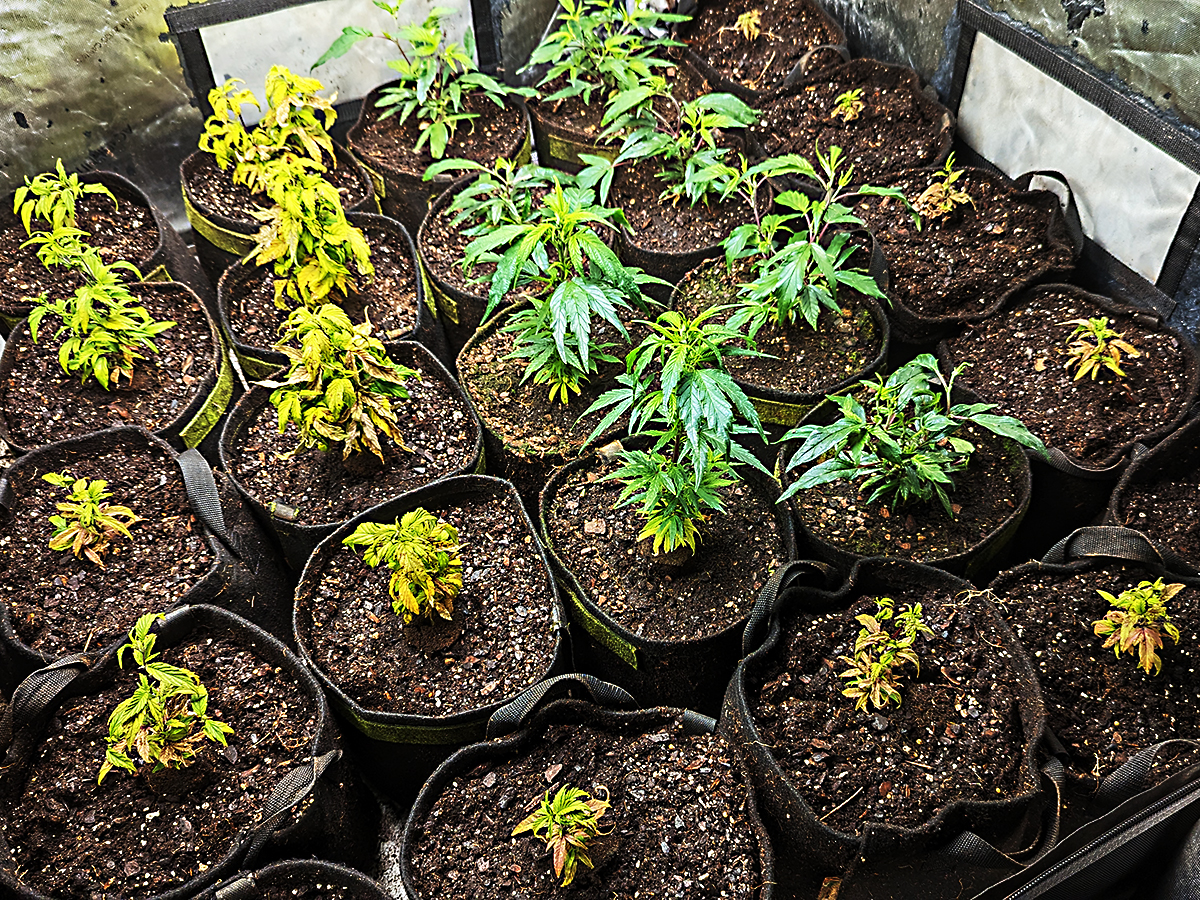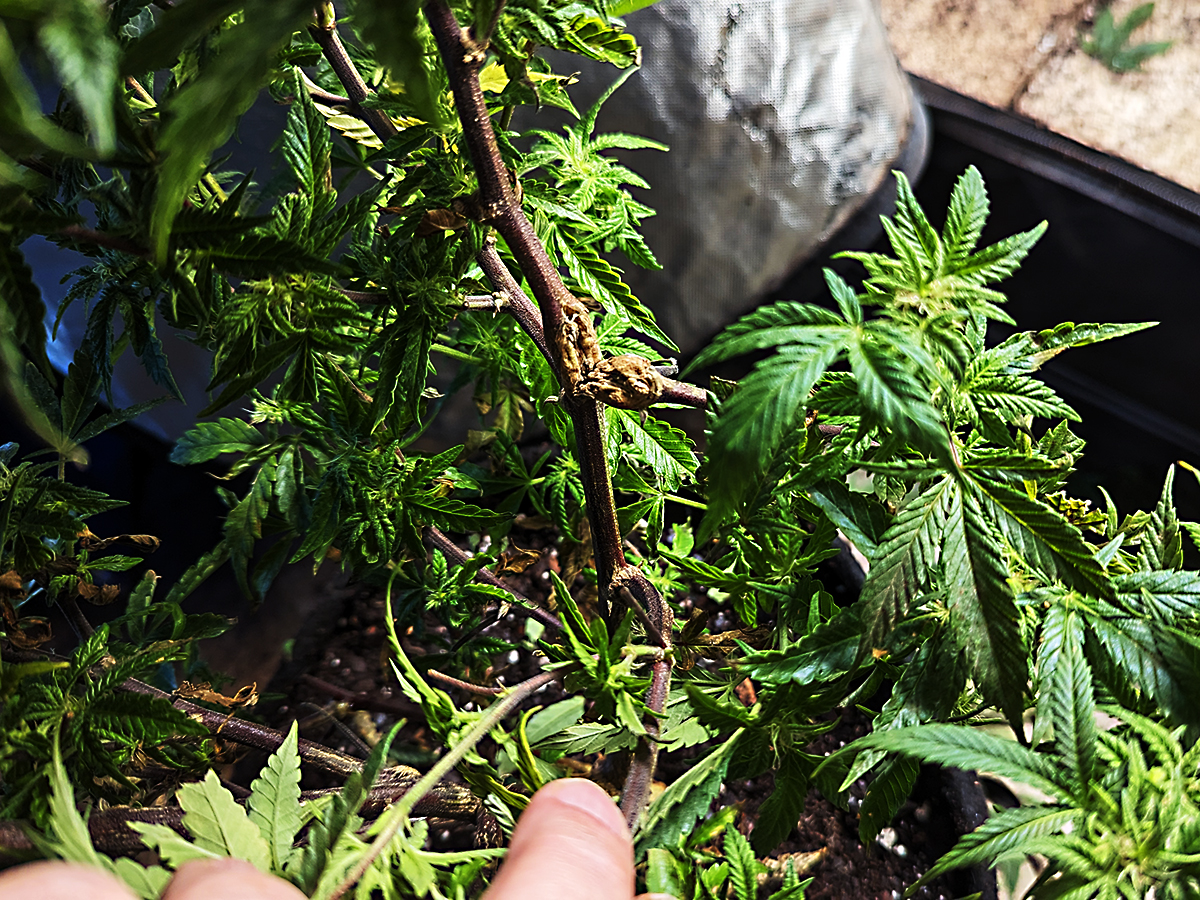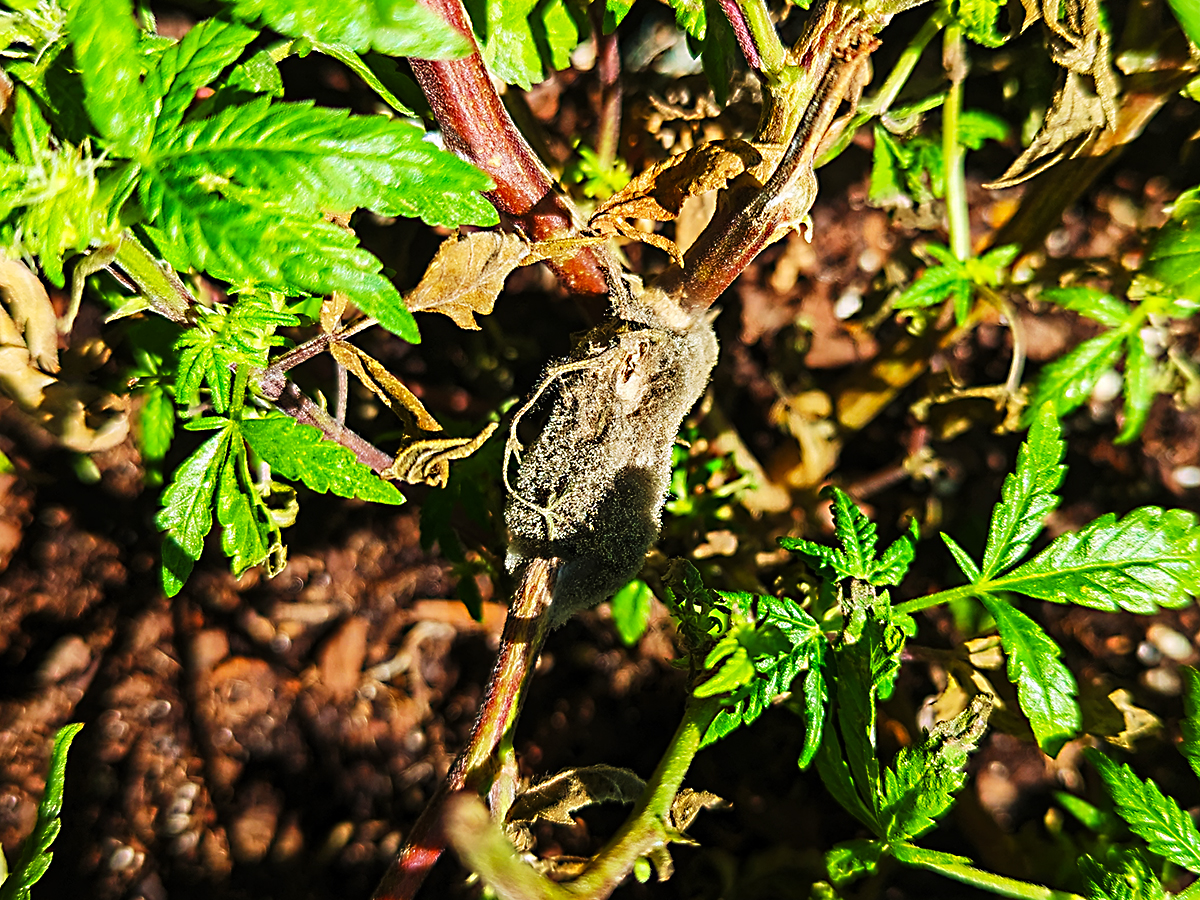Time to follow up on what I think I’m going to call Purple Lights, the Type II/Indica dominate plants I’ve concentrated on the last several grows. I want to restate yet again (and I may do this every time I post about purple buds) that I know for a fact color has absolutely no bearing whatsoever on the potency of cannabis, period… end of story. Ever since Acapulco Gold and Panama Red became synonymous with high quality cannabis, any color of cannabis besides Mexican brick brown has been thought of as an indicator of high quality and subsequently commanded a higher price. Whether it’s Gainesville Green or Santa Marta Gold, colored cannabis impresses most people and has what dealers call “bag appeal”.
The original Sensi Northern Lights had almost no “bag appeal” because it was usually just a basic green color, had very little smell and was not saturated in trichomes like cannabis is now. But there’s a reason why it won so many Cannabis Cups in the 80’s… it got you higher than most other cannabis that was available at the time. When comparing Northern Lights to Skunk, everyone thinks the Skunk is “better” because of the smell. The same analogy holds true for color as well. Just because it’s purple doesn’t mean the cannabis is “better”, has more THC, or gets you higher while using less. But damn, these buds are compact, dense, pretty glazed with trichomes and smell like citrusy fruit and dirt. They’ve actually got some “bag appeal”.
I know I’ve posted before about the outrageously descriptive phrases people use to describe the smell of cannabis and I try not to repeat subjects but given my memory these days, that gets harder and harder to do. So I’m not going to rant about the smell of cannabis in this entry other than to say, not only can you not believe everything you see but you can’t believe everything you smell as well.
I’ve read many theories on why cannabis buds turn purple and like every other thing about cannabis, there are many disparate opinions. I could drone on with scientific terms like anthocyanins and flavonoids, discuss the effects of temperature and pH, etc. but an in-depth discussion would get very boring. So to save time, I'll cut to the chase. The reason why buds turn purple is, like we used to say in Critical Care medicine, multifactoral. Genetics has to be the primary driving force in the development of color but environment has a profound effect as well. Every time I think about discussions on genetics and environment, I always remember the movie Trading Places. The billionaire brothers bet a dollar on what is more important to achieve success, breeding or environment. With cannabis (and almost everything else in life for that matter), it’s not an either/or situation, it is an and/with situation. For whatever reason, the isolation of the indica portion of Northern Lights back to it's original ancestor, combined with the environment I've created for the development of cannabis, created the chemicals necessary (anthocyanins) to turn the bud a pretty shade of purple.
It doesn't make them better, stronger, more potent or anything like that. It just makes them purple.
